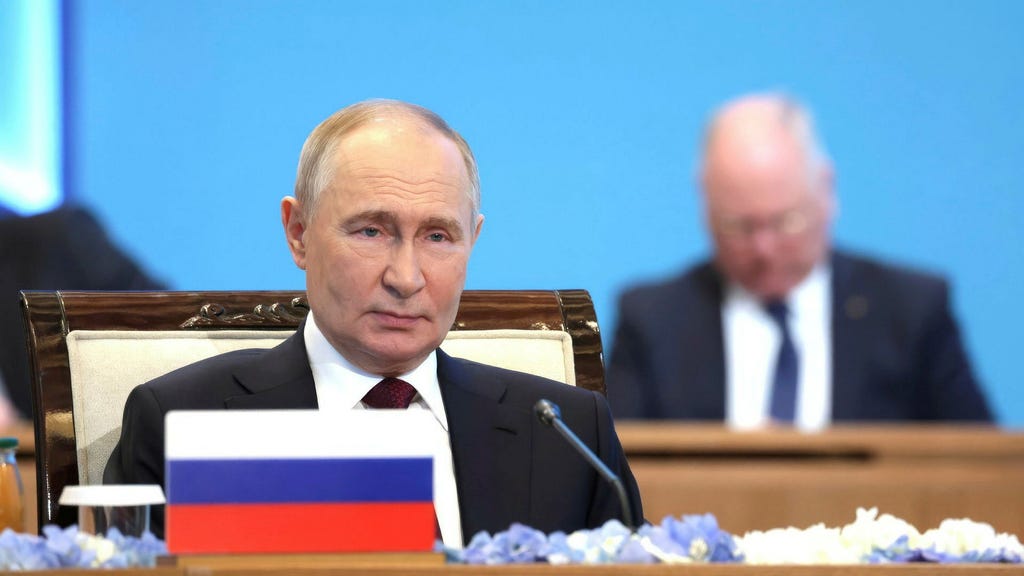Recent weeks have witnessed a surge in global headlines dominated by Russia’s nuclear threats. These threats have taken multiple forms, including the signing of a new nuclear doctrine by President Vladimir Putin on November 19th, followed by the test launch of an Oresjnik (”Hazel”) ballistic missile, capable of carrying nuclear warheads, towards Ukraine on November 21st. This latest missile test has heightened concerns within NATO, with Jim Stokes, a senior NATO official overseeing the alliance’s nuclear policy, describing it as a departure from previous Russian actions. While NATO remains vigilant and prepared to respond accordingly, it emphasizes that these actions have not yet triggered any immediate changes to the alliance’s nuclear posture.
NATO’s nuclear strategy rests heavily on the concept of ”nuclear sharing,” with the United States, the primary nuclear power within the alliance, deploying a number of nuclear weapons across several European member states. While exact locations and numbers remain classified, estimates suggest the presence of between 100 and 150 American nuclear weapons at air bases in Belgium, the Netherlands, Germany, and Italy, with Turkey previously hosting such weapons as well. The United Kingdom also participates in NATO’s nuclear deterrent, while France, despite possessing its own independent nuclear arsenal, remains outside the alliance’s nuclear sharing framework, though its nuclear capabilities are considered a contributing factor to overall deterrence.
In response to the evolving global security landscape, particularly Russia’s increasingly assertive posture, NATO is actively modernizing its nuclear capabilities. This modernization effort includes upgrading a greater number of F-35 fighter jets to carry nuclear weapons, alongside the ongoing modernization of the B61 nuclear bombs deployed in Europe. Simultaneously, NATO is carefully analyzing Russia’s revised nuclear doctrine to understand its implications for strategic stability. Initial assessments suggest that the doctrine expands the circumstances under which Russia might consider using nuclear weapons, raising concerns about a lowered threshold for nuclear conflict.
Russia’s recent nuclear saber-rattling, particularly the statements surrounding the Oresjnik missile system and its potential targeting of Kyiv, is widely interpreted as an attempt to discourage, or even halt, Western support for Ukraine. NATO officials, however, remain resolute in their commitment to Ukraine and believe that Russia’s nuclear threats will ultimately prove ineffective in altering this course. Within NATO, there is confidence in the strength and credibility of the alliance’s nuclear deterrent, which remains a cornerstone of its security posture. This confidence is reinforced by the ongoing modernization efforts and the shared commitment to collective defense among member states.
The debate surrounding nuclear weapons extends beyond the immediate context of the Russia-Ukraine conflict. In Germany, for instance, concerns resurfaced last winter regarding the reliability of the US nuclear umbrella, prompting discussions about the potential development of national nuclear capabilities. These anxieties, rooted in the perceived unpredictability of US foreign policy under the previous administration, highlight the complexities of nuclear deterrence and the delicate balance between national security concerns and the broader objective of non-proliferation. NATO remains committed to upholding the principles of the Nuclear Non-Proliferation Treaty and discouraging further nuclear proliferation, recognizing the inherent risks associated with expanding the nuclear club.
As Sweden integrates into NATO, its domestic political landscape presents a unique challenge to the alliance’s nuclear policy. Certain political parties within Sweden advocate for legislation prohibiting the deployment of nuclear weapons on Swedish soil, creating a potential point of contention within the alliance. NATO, however, emphasizes its consensus-based approach and affirms that there are no prerequisites for hosting nuclear weapons. The alliance respects Sweden’s autonomy in this matter and acknowledges that the absence of consensus would preclude any nuclear deployments on its territory. This commitment to consensus underscores the flexibility and adaptability of NATO’s nuclear posture in accommodating the specific security concerns and political realities of its member states. While Russia’s actions and rhetoric have generated heightened anxiety and prompted a re-evaluation of nuclear strategies, NATO remains steadfast in its commitment to maintaining a robust and credible nuclear deterrent, while simultaneously adhering to the principles of non-proliferation and respecting the sovereign decisions of its member states.














